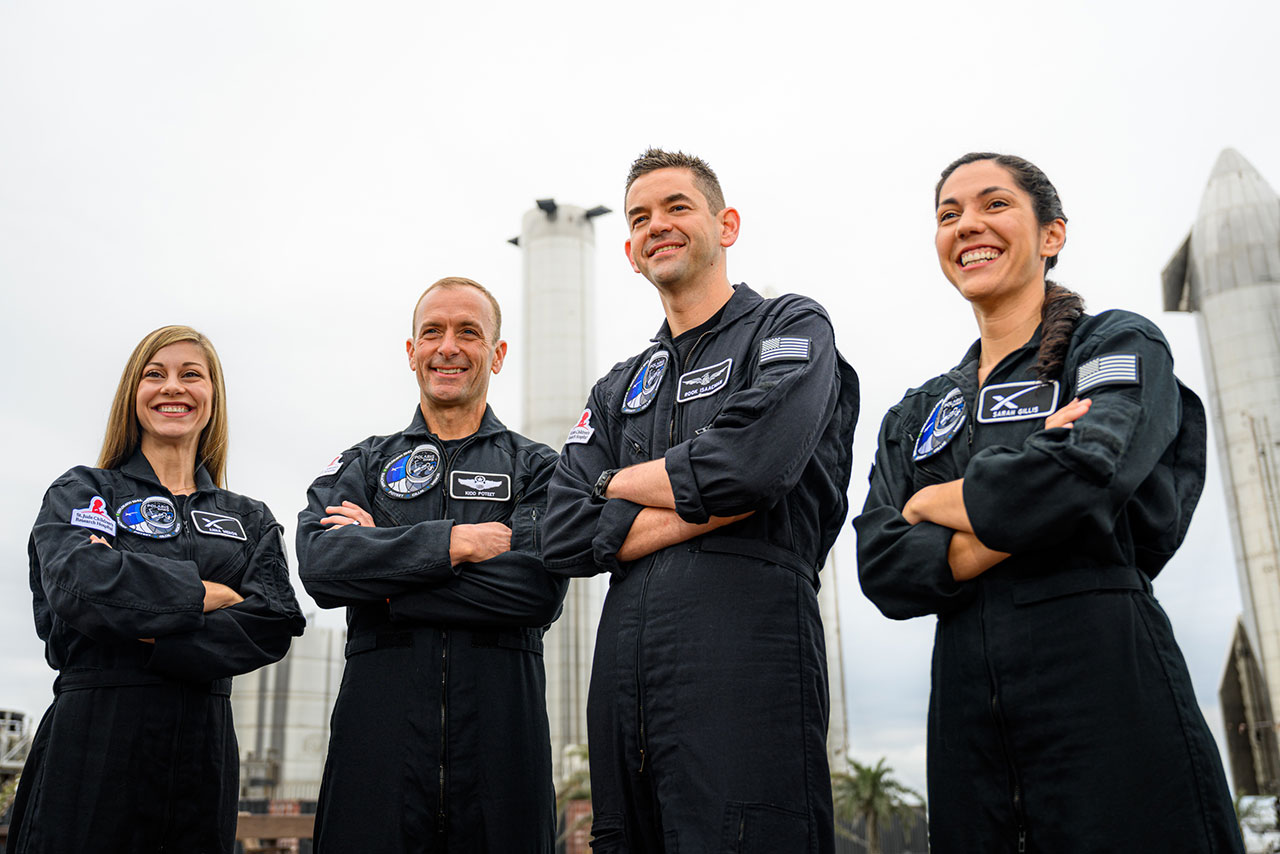
Polaris Dawn was the gate-opener mission to the larger Polaris Program, a set of at least three anticipated missions bankrolled by billionaire Jared Isaacman.
Polaris Dawn was originally scheduled to launch on Aug. 26, 2024, but SpaceX pushed it back a day to perform additional preflight checks. It was delayed again on Aug. 27, 2024, due to unfavorable launch and return conditions. The mission eventually launched on Sept. 10, 2024, and it didn't take long for this mission to make history. On Polaris Dawn's first day in space, Resilience reached a maximum altitude of 870 miles (1,400.7 kilometers) — higher than any crewed Earth-orbiting spacecraft had ever gotten.
The mission was commanded by Jared Isaacman, the founder of payment provider Shift4. This will be Isaacman's second mission in space after paying for the Inspiration4 mission which helped raise over $240 million for St Jude Children's Research Hospital in 2021.
Four people flew to space on Polaris Dawn to conduct scientific experiments, once again raise money for St. Jude's Children's Research Hospital in Memphis, and perform the first commercial spacewalk using SpaceX spacesuits.
Related: SpaceX's private Polaris Dawn space crew talks about their ambitious mission (exclusive)
Polaris Dawn crew
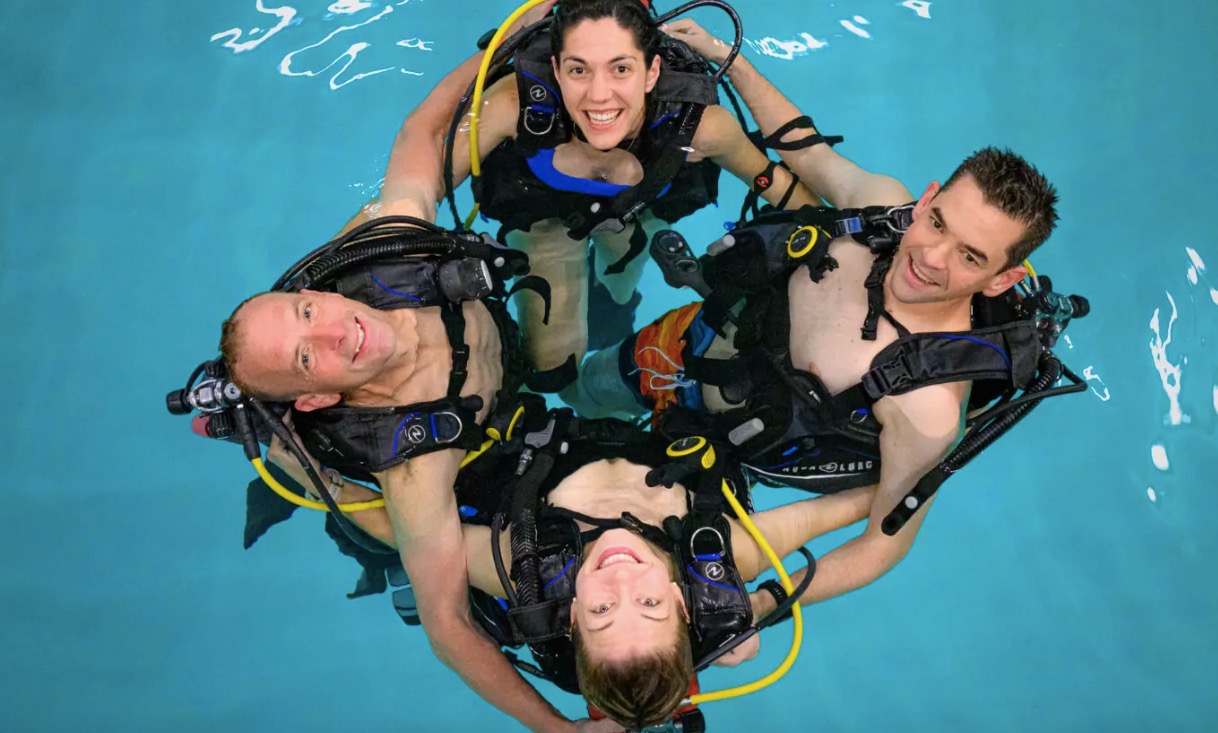
The Polaris Dawn crew included one veteran astronaut and businessperson, two SpaceX personnel experienced in crewed and uncrewed launches and mission operations, and a former combat pilot.
Jared Isaacman commanded the SpaceX Inspiration4 mission that flew to Earth orbit in September 2021. Isaacman is the billionaire founder of Shift4 Payments and paid for the trip, along with the seats of all of his crewmates. He has also done a high-speed circumnavigation of the world and air shows and previously owned the jet pilot training company Draken International. He has about 6,000 hours of flying experience.
Scott "Kidd" Poteet is a retired United States Air Force (USAF) Lieutenant Colonel and a pilot with more than 3,200 flying hours in numerous high-performance aircraft such as the F-16 and T-37, according to his Polaris Dawn biography. He also served in combat and was commander of the 64th Aggressor Squadron and USAF Thunderbird No. 4 demonstration pilot. Poteet is a long-time business associate of Isaacman, including director of business development at Draken International and vice-president of strategy at Shift4. He has also finished 15 Ironman triathlons since 2000.
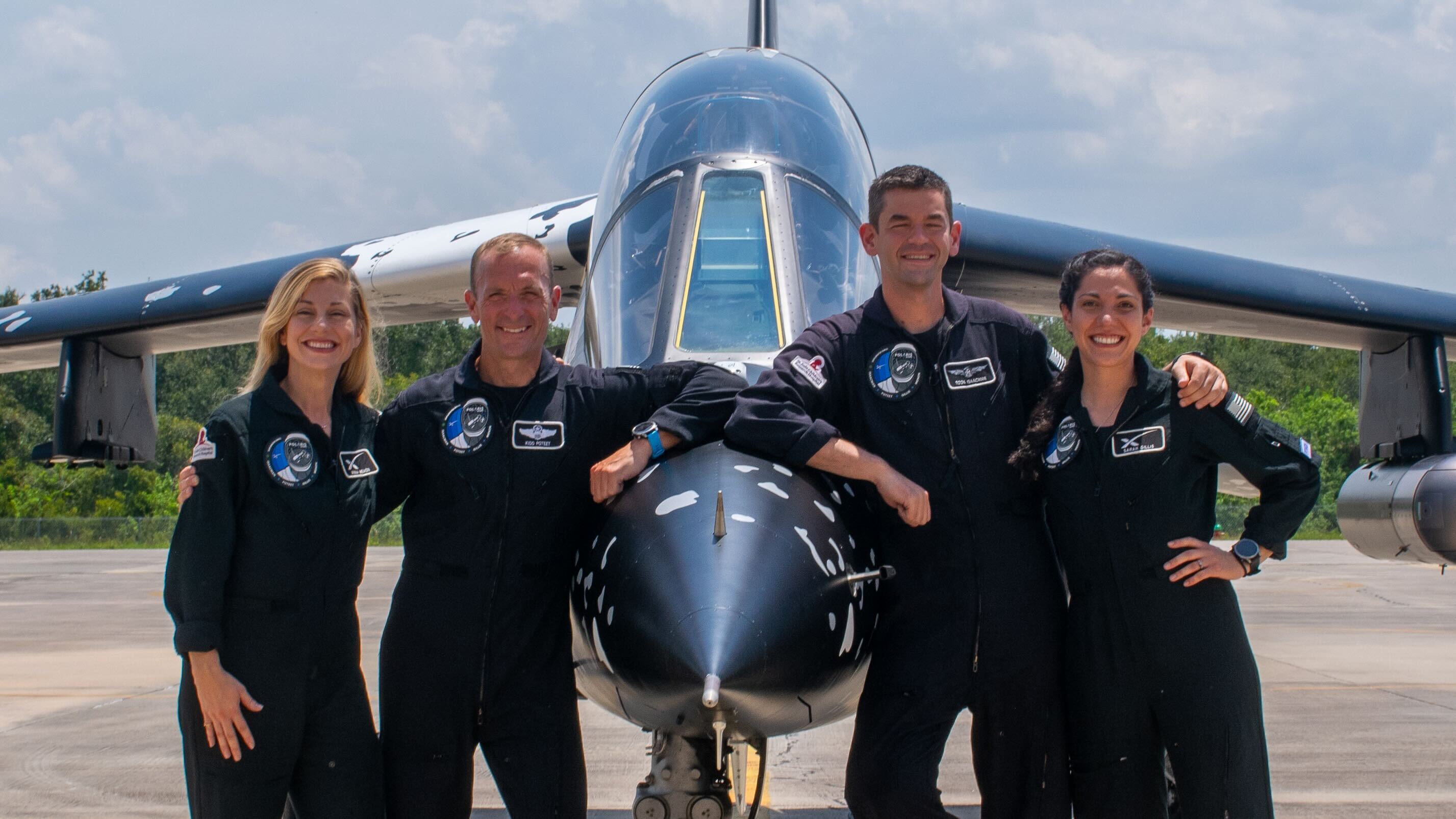
Sarah Gillis is a lead space operations engineer at SpaceX and is responsible for astronaut training for missions such as Inspiration4 and NASA Crew Dragon missions Demo-2 and Crew-1. Her biography notes extensive mission control operations, including serving as a navigation officer for Dragon cargo resupply missions, and crew communicator for Dragon human spaceflight missions. Gillis' original career goal was to be a classical violinist, but she changed her career goals to engineering after speaking with her high school mentor, former NASA astronaut Joe Tanner.
Anna Menon is a lead space operations engineer at SpaceX, managing crew operations development and working as mission director and crew communicator. Notable missions, her biography states, include NASA crewed spaceflights Demo-2 and Crew-1, along with the uncrewed cargo missions CRS-22 and CRS-23. Menon previously worked at NASA as a biomedical flight controller for the International Space Station. She also has experience in biomedical engineering with the World Health Organization, Engineers Without Borders and Engineering World Health. Her fourth-grade teacher, Alison Smith Balch, was the daughter of the space shuttle Challenger pilot Michael J. Smith; the elder Smith died during the Challenger shuttle accident in 1986.
Mission overview
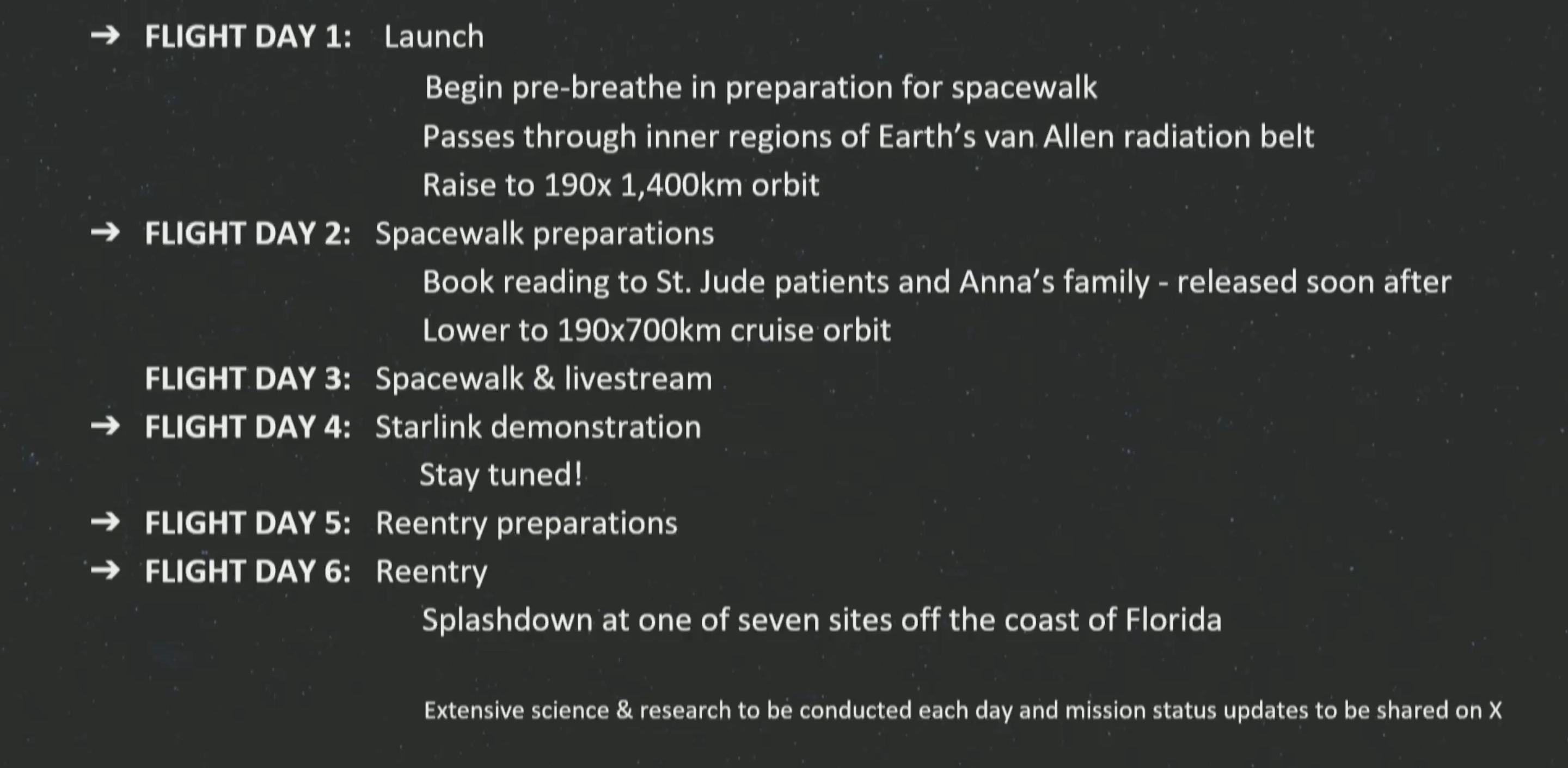
Polaris Dawn embarked on a five-day space mission, launching into an elliptical orbit around Earth on Sept. 10, 2024.
The Dragon spacecraft completed several orbits before increasing its maximum altitude, or apogee, to approximately 870 miles (1,400 kilometers) — the highest altitude any human has reached since the last Apollo mission in 1972.
Polaris Dawn also performed the first-ever commercial spacewalk using a new commercial spacesuit designed by SpaceX. Visually, the suit resembles a thicker version of SpaceX's earlier spacesuit, which was designed exclusively for use inside a spacecraft. However, the new suits are engineered to operate outside a spacecraft and are equipped with advanced materials, a thermal management system, and a new coating on the helmet visor. They also feature heads-up information displays and cameras.
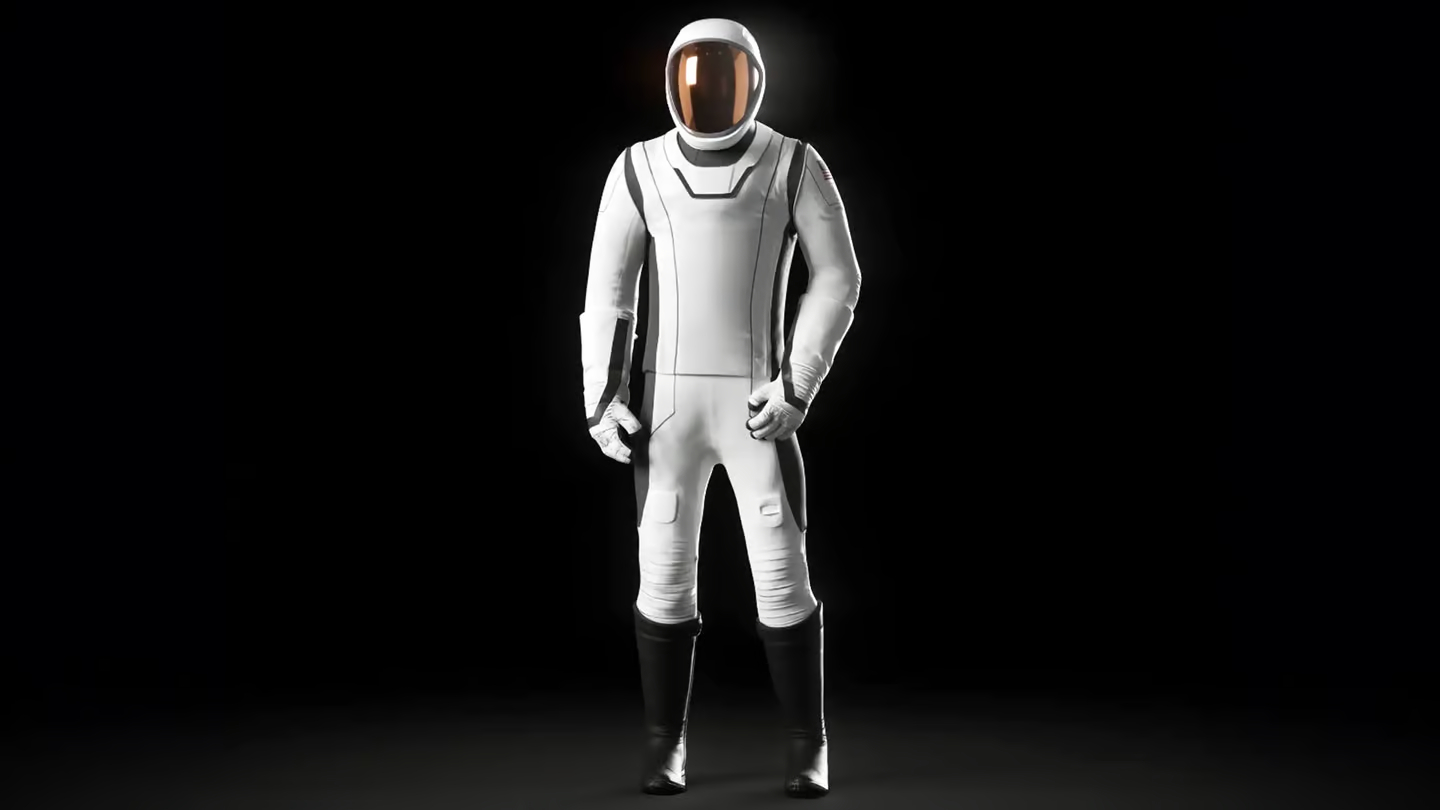
Additionally, Polaris Dawn performed a set of science and engineering experiments, such as communicating with SpaceX's high-speed network, Starlink.
"You might think getting internet might be as easy as just flipping that switch turning on your internet, but it's not," Gillis told reporters at a press conference on Aug. 19, 2024.
"We're talking about a laser sending information to a Starlink satellite that is moving at orbital velocity down to Earth, and then back again. So, it's been an incredible development effort by the SpaceX team — and, on a personal note," Gillis added, "I've taken specific interest in this development effort, and we have a special message that we will share with the world using this technology."
Other sample experiments include these listed on the Polaris Dawn website:
- Using ultrasound to monitor, detect, and quantify venous gas emboli (VGE), contributing to studies on human prevalence to decompression sickness;
- Gathering data on the radiation environment to better understand how space radiation affects human biological systems;
- Providing biological samples towards multi-omics analyses for a long-term Biobank; and
- Research related to Spaceflight Associated Neuro-Ocular Syndrome (SANS), which is a key risk to human health in long-duration spaceflight.
The astronauts did some cultural and financial outreach as well. For instance, Menon conducted an orbital reading of the children's book she co-authored, "Kisses From Space" (Penguin Random House, 2024). According to SpaceX, proceeds from sales of the book will go to St. Jude Children's Hospital in Memphis. (Inspiration4 also supported St. Jude; that mission ended up raising more than $250 million for the hospital.)
And Gillis played a song from "Star Wars" on the violin aboard Resilience. Her performance was synched with that of orchestras around the world for a music video the Polaris Dawn team put together.
Read more: SpaceX's private Polaris Dawn astronauts splash down to end historic spacewalk mission (video)
Polaris Dawn FAQ's answered by experts
How was the crew selected?
Jared Isaacman: Polaris is very much a joint effort with SpaceX. We decide on a lot of things together with respect to the Polaris Program. In the case of the crew, we built a crew to meet the mission objectives. Of course, having familiarity and trust with everyone from Inspiration4 played a part, but I think if you look at each crew member's background, you can see why they are so well suited for this mission and the objectives we aim to accomplish.
What are you hoping to accomplish in future Polaris missions?
Isaacman: Each mission should build off the previous one and hopefully much can be learned from the science, the research and all the technology we aim to demonstrate. When Polaris is over, the first crewed Starship should have flown and that is the vehicle that will open space to the many. It will return humans to the moon and ultimately to Mars and beyond. It is amazing to really even think about.
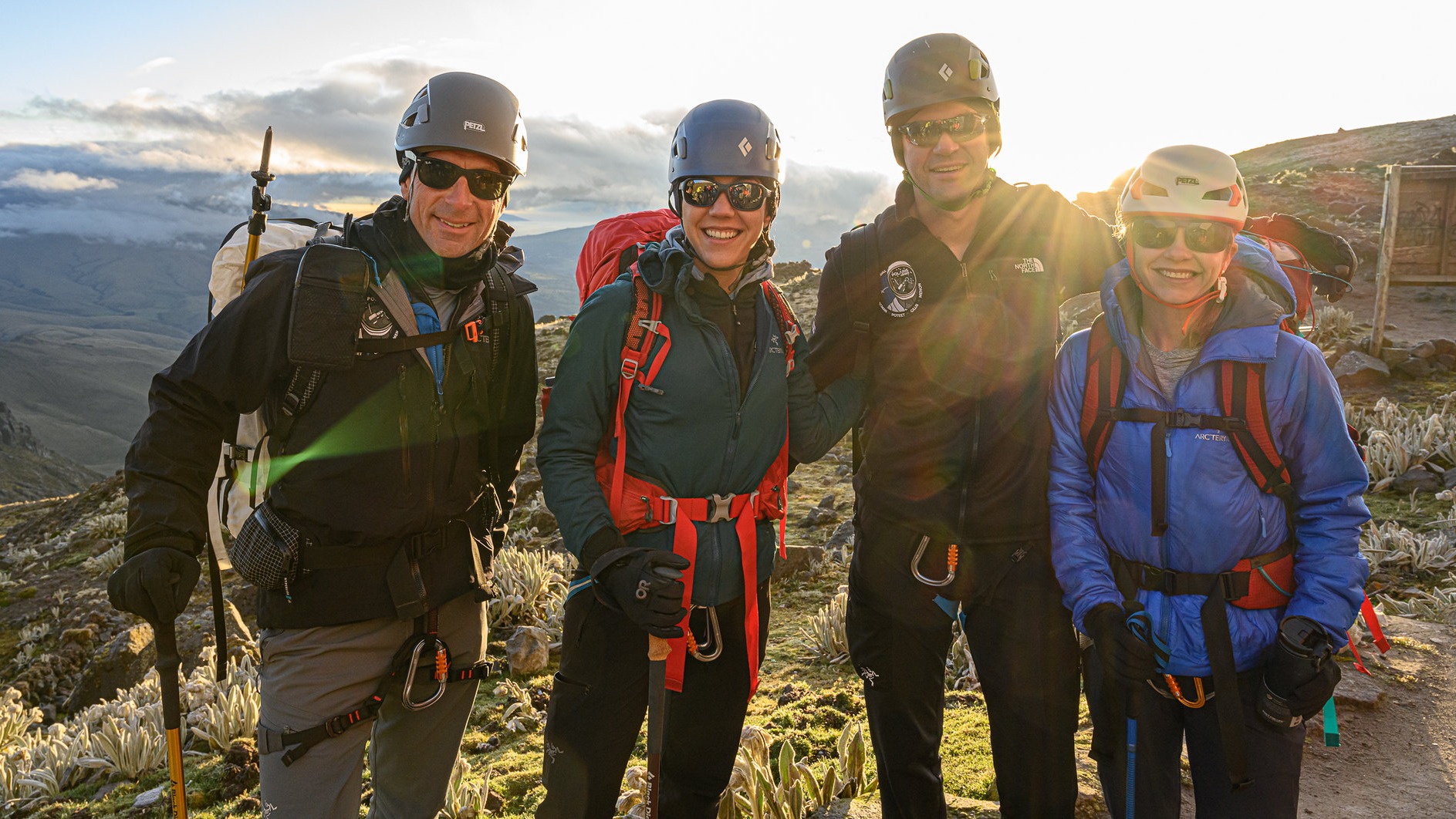
How does the Polaris Dawn crew training compare with the NASA astronauts who fly aboard Crew Dragon?
Sarah Gillis: Our Dragon training program is identical to the NASA astronaut training program, aside from topics that relate to rendezvous and docking with the International Space Station, based on our free-flyer trajectory. In addition, we have added an entire training program to prepare us to use the new EVA [extra-vehicular activity, or spacewalk] suit and execute the EVA operation, as well as mission-specific training for the 40 or so research experiments we will be performing in-flight. Finally, the SpaceX medical team has done an awesome job creating a new medical training program that is similar to what NASA crew members undergo.
Additional resources
Explore the Polaris Dawn mission on its official website. Stay up to date on the Polaris Program on Twitter and Instagram.
Bibliography
Foust, Jeff. (2022, Oct. 25). "Polaris Dawn crewed mission could suffer additional delays." SpaceNews. https://spacenews.com/polaris-dawn-crewed-mission-could-suffer-additional-delays/
Polaris Dawn official website. (2023.) https://polarisprogram.com/dawn/
Washington Post Live. (2022, Oct. 3). "Transcript: The path forward: Private space travel with Jared Isaacman." The Washington Post. https://www.washingtonpost.com/washington-post-live/2022/10/03/transcript-path-forward-private-space-travel-with-jared-isaacman/







